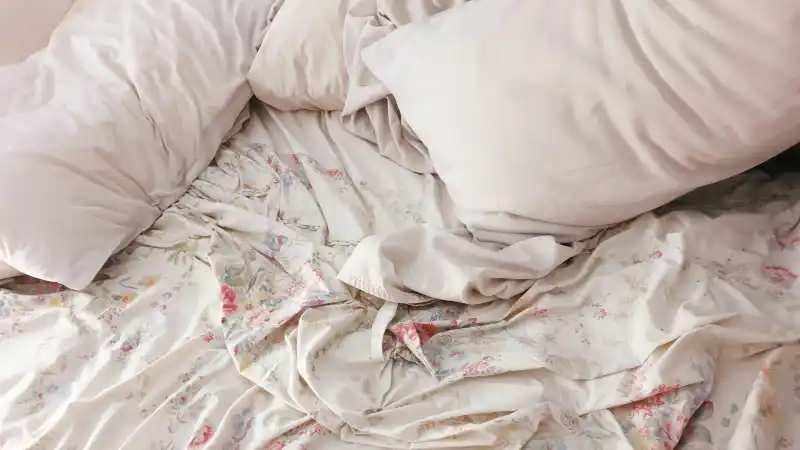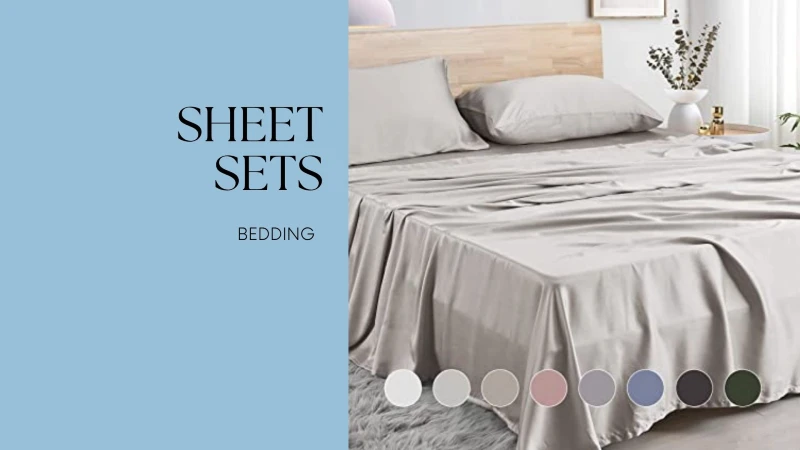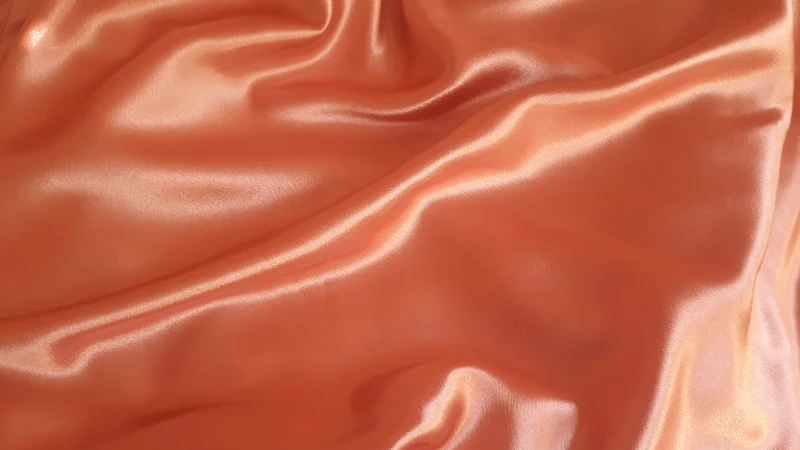Disclosure: This post may contain affiliate links, meaning we get a commission if you decide to make a purchase through our links, at no cost to you. Please read our disclosure for more info.
In This Post:
- The Hidden Invader in Your Sleep Space
- Why Your Bedding Is Particularly Vulnerable
- The Real Cost of Ignoring Early Signs
- Proactive Protection Strategies for Luxury Bedding
- Creating a Mould-Resistant Bedroom Environment
- Safe Mould Removal for Different Bedding Types
- Essential Tools for the Bedroom Mould Prevention Arsenal
- Seasonal Strategies for Year-Round Protection
- Building Healthy Bedding Habits
- Conclusion: The Ultimate Sleep Sanctuary
The Hidden Invader in Your Sleep Space
The pursuit of perfect sleep often focuses on thread counts and pillow firmness, but sometimes the most significant sleep disruptor lurks unseen within our bedding. When humidity levels rise, complete home mould removal solutions become an essential consideration for maintaining a truly healthy sleep sanctuary. Many homeowners discover too late that their premium mattresses, luxury duvets, and high-end pillows have become breeding grounds for unwanted spores, making thorough residential mould removal and prevention services a crucial part of bedroom maintenance. The impact of mould on both your bedding investments and your health makes addressing this issue a non-negotiable aspect of comprehensive home care.
Why Your Bedding Is Particularly Vulnerable
Bedrooms create the perfect storm of conditions for mould development in ways many homeowners don’t realize until they’re facing discolored sheets or musty odors. Understanding this vulnerability helps protect your textile investments:
- Our bodies release approximately half a liter of moisture during an average night’s sleep through respiration and perspiration, creating a humidity hotspot directly in your bedding.
- Modern, well-insulated homes with reduced air exchange trap moisture indoors, particularly in bedrooms with closed doors during sleep hours.
- Premium bedding materials like down, natural latex, and high-thread-count cotton can absorb and retain significant moisture without feeling noticeably damp.
- Mattresses and pillows provide the dark, undisturbed environment mould spores need to establish colonies, especially when tucked beneath sheets and covered with decorative shams.
The Real Cost of Ignoring Early Signs
Procrastinating on mould removal from bedroom textiles creates a cascade of expenses and complications that extend far beyond simple cleaning:
- High-end mattresses affected by deep mould contamination often cannot be fully remediated, potentially turning a $2,000 investment into a complete loss.
- Luxury down comforters and pillows may require specialized cleaning costing upwards of $150 per item, with no guarantee of complete mould elimination.
- Cross-contamination to nearby textiles, including window treatments, area rugs, and upholstered headboards, expands the problem exponentially.
- Mould spores released into bedroom air can trigger respiratory issues, skin irritation, and allergic reactions, potentially turning your sleep sanctuary into a health hazard.
Proactive Protection Strategies for Luxury Bedding
Protecting high-quality bedding requires a multi-layered approach that addresses both prevention and early intervention:
- Invest in premium mattress and pillow protectors with waterproof yet breathable barriers that create physical separation between your body’s moisture and expensive bedding cores.
- Establish a regular airing routine where bedding is pulled back for 20-30 minutes after waking, allowing night moisture to evaporate before making the bed.
- Rotate and flip mattresses quarterly, using this opportunity to inspect for any early signs of mould development along seams and in crevices.
- Wash pillow and mattress protectors monthly in hot water with a mould-inhibiting laundry additive to reset any beginning microbial growth.
Creating a Mould-Resistant Bedroom Environment
The broader bedroom environment plays a crucial role in keeping bedding mould-free:
- Maintain optimal bedroom humidity between 40-50% using a reliable hygrometer to monitor levels and a dehumidifier when needed.
- Position beds to allow air circulation on all sides, avoiding placement directly against exterior walls in humid climates where condensation is more likely.
- Install ceiling fans or use oscillating fans to improve air movement throughout the bedroom, particularly during seasons with higher humidity.
- Consider mechanical ventilation solutions such as energy recovery ventilators that exchange indoor air while maintaining temperature control.
Safe Mould Removal for Different Bedding Types
When early signs of mould appear, specific remediation approaches help salvage expensive bedding:
- For washable items like cotton sheets and duvet covers, use hot water (60°C/140°F minimum) with specialized enzymatic cleaners designed for mould removal rather than just masking odors.
- For spot treatment on non-washable materials, create a solution of distilled white vinegar and hydrogen peroxide, testing first in an inconspicuous area to ensure no discoloration.
- For down and feather products showing minimal contamination, professional dry cleaning with specific instructions for mould remediation provides the best chance of salvage.
- For foam components like mattress toppers, a multi-step process of thorough vacuuming, targeted cleaning with appropriate solutions, and complete drying in direct sunlight offers the best results.
Essential Tools for the Bedroom Mould Prevention Arsenal
A well-equipped bedding care kit should include these mould-fighting essentials:
- A quality dehumidifier sized appropriately for your bedroom square footage with an auto-shutoff and drainage option.
- UV wands designed for textile sanitizing that can eliminate surface mould spores during regular bedding maintenance.
- Moisture-absorbing products like silica gel packets or specialized moisture traps for closets and under-bed storage areas.
- Mould-inhibiting sprays formulated specifically for textiles as preventative treatments after seasonal bedding changes.
Seasonal Strategies for Year-Round Protection
Different seasons present unique challenges for bedding mould prevention:
- Spring: Conduct thorough inspection and cleaning of all bedding as part of seasonal rotation, paying special attention to items stored during winter months.
- Summer: Increase dehumidification efforts during high humidity periods, considering temporary use of air conditioning even when not at home to maintain stable conditions.
- Fall: Prepare stored summer bedding with proper cleaning and appropriate storage containers that resist moisture infiltration.
- Winter: Combat the effects of heating systems by monitoring indoor humidity and ensuring adequate ventilation despite the temptation to seal homes tightly against cold.
Building Healthy Bedding Habits
Long-term bedding protection requires consistent habits that become second nature:
- Develop a weekly sheet-changing routine regardless of visible soiling, as microscopic organic matter accumulates and creates mould-friendly conditions.
- Schedule quarterly deep-cleaning days for all bedroom textiles including items often overlooked like decorative pillows and bed skirts.
- Practice proper seasonal storage with thorough cleaning, complete drying, and appropriate container selection for off-season bedding.
- Maintain a replacement calendar for bedding items that typically harbor more moisture, like pillows, which should be replaced every 1-2 years regardless of visible condition.
Conclusion: The Ultimate Sleep Sanctuary
Creating and maintaining a truly luxurious sleep environment extends beyond selecting premium bedding materials to implementing comprehensive mould prevention strategies. With thoughtful attention to moisture management, regular maintenance routines, and early intervention when needed, your investment in quality bedding can provide years of comfortable, healthy sleep.
By incorporating these mould removal and prevention practices into your broader bedroom maintenance routine, you transform your sleep space from a potential problem area into a genuine sanctuary. The resulting benefits – preserved bedding investments, improved indoor air quality, and ultimately better sleep – make these efforts well worth incorporating into your home care regimen.




